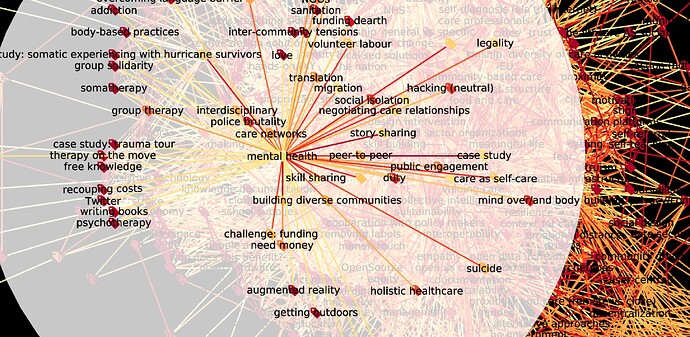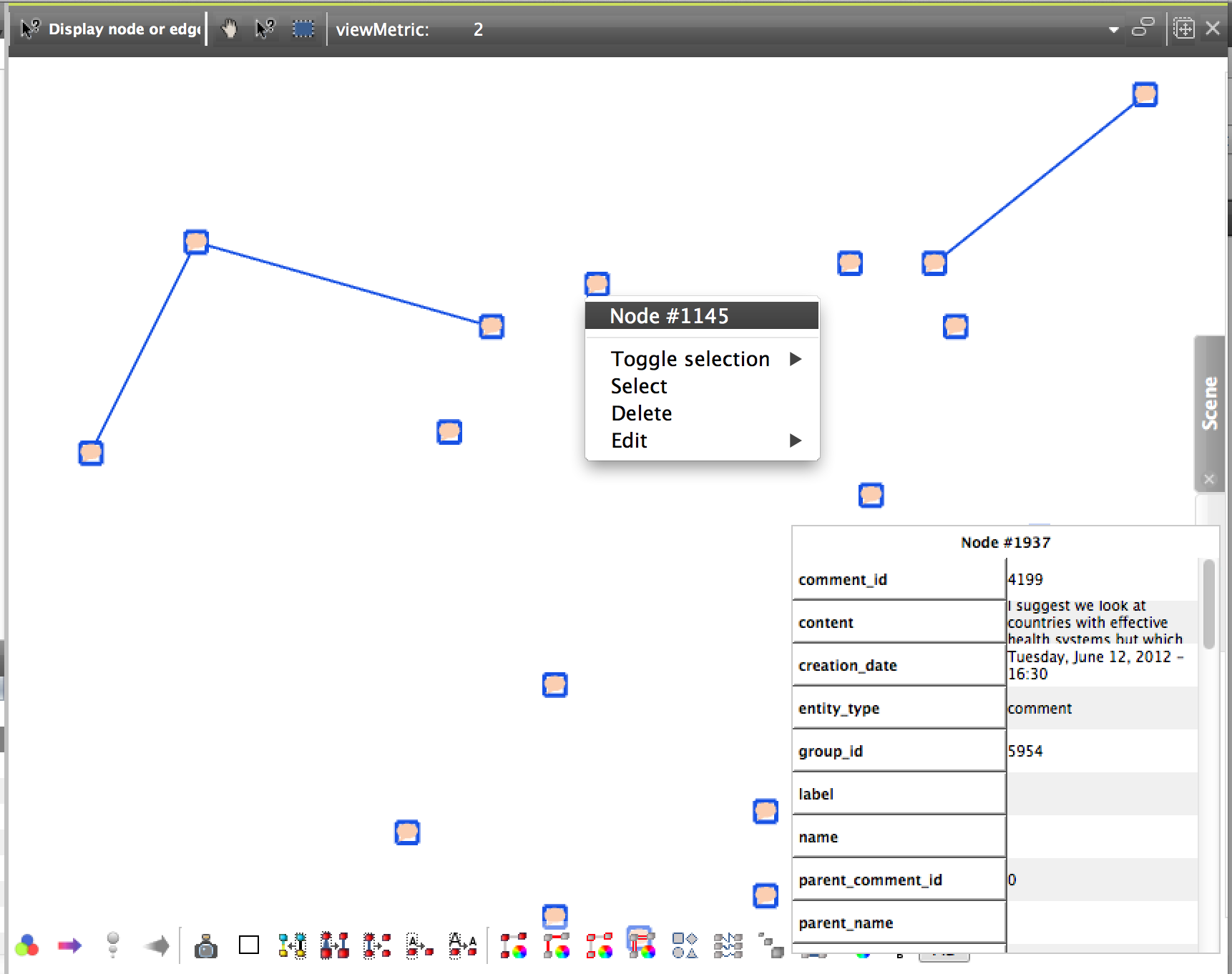Three points about a hypothesis i’m working on
So here is my reader’s digest for today with some detailed thoughts about the construction of my analytical model.
It is addressed mainly to @Alberto, @Noemi, @Amelia and @bpinaud
Jump to modelling in point 3 if you are not interested in some boring sociological speculations (point 1) and my first hypothesis (arguable and temporaneous…of course) (point 2):
- A strong starting point about “collective intelligence” consists in a statement of Emile Durkheim. I like to move on from classics! Lets’ see what he says…
As far as i recall: collective intelligence (society) trascends individuals by space and time and is detectable by collective representations visible in enacted practices such as performances, rituals, taboos, celebrations (mostly in 1893 and 1912 writings, i should check anyway). Durkheim had the idea of flows of ideas and values living inside people and making them synchronised the ones to the others thanks to society representing itself in them. …a sort of nightmare…but that was during positivism…and these were the first cultural theories… anyway what is sure (and many failed in interpreting his thought) is he never said that people part of a society think the same things and do the same things…he was for a organic view of society.
Of course here we are not dealing with holy/profane and other stuff from the aboriginal cultures from the australian outback studied by Durkheim, but the point stays in the relation between a community and its enacted practices (material as much as discursive). How a community represents itself in what it does?.. the recall of Durkheim in the theory of “communities of practice” (Wenger, 1988) is strong; infact Wenger sees the domain of specialised knowledge the way a community identifies itself by putting such knowledge in practice (an example for all: the physicians).
So, it’s about community, knowledge and what can be detected in terms of accountability of something textual (described): the practice, what people do and tell, or don’t do and don’t tell…(i’m still curious about lurkers…)
Now there are some pros and cons in our case, as the more I deep in the conversations and development of the OP3NCARE big narration (we are all making the history of it…) I remark a strong involvement of anyone, but what I also see is the need to keep separate the technical and the social as if they were two different worlds. In the process (ans if we want to tell about how the process is happening) there are time to time needs to move further steps in improving the technical side (let’s say the environment where the community lives) as the community changes or grows. Other times negotiations or silence happen…and there’s nothing more socially negotiated than silence (how much time do I need to stay silence to let you understand the lesson is beginning? 10 seconds, 12, one minute…? I used often as example/experiment to start my lectures). So I think about stories with many replies and a lot of effervescence and interest going on compared to stories with no replies, or just one or two…
Surely, surfing through OP3NCARE, we have a evident activity and all the stories written by people commenting and coming to know each others build in sociological terms a phenomenon. We must consider that these participants have an interest in posting their stories, have certain digital skills and be open care oriented we might. Probably one on ten of stories eligible for OP3NCARE are being posted, because information was not available, or there are no digital skills enough to post the story, or as institutional projects are not allowed to publish anything on the web without authoriarion, who knows…
Although we shouldn’t also forget the input and boosting of activities run by edgeryders staff, who is posting stories, commenting and connecting people. Now the point of connecting people is very important as it goes in the direction of shaping a interacted behaviour and, yes, the foregrounds of a culture based on sharing stories and reading around. That’s what I find be as much an elementary as an important point.
Said all this, lets’ move to construct the model…i’m still working to consider more authors and references (networked localities, virtual communities behaviour, etc…collective/connective…) to be included and what above is just some of the ideas i’m having…don’t expect too much methodology yet.
- We can get some elements for the dimensions of analysis considering:
a) what and where are collective/social facts in OP3NCARE
b) what can be considered a collective intelligent action or effect in OP3NCARE (this to detect and observe phenomena referable to the “community in the making”, i.e. the behind the scenes in terms of negotiations, contacts, tuning needed to get to a meaningful picture of what we see on the screen: each opencare story…i guess)
c) how much OP3NCARE categories and forms of classifications can be considered socially driven in their causes and effects, as infrastructuring the culture
All these elements could become parts of a model that could be used to perform some tests (see point 3) and see what happens when we add some details to check if the model satisfies the description of the processes with the data we have.
I still have not clear in my mind what the whole OP3NCARE networkscape looks like on a hand, while on the other -althought I understand some visualization and processing properties- Tulip needs much more practice for me to understand how to run and be confident with it. That is my fault of course.
What is sure is that we must understand not the single parts as parts, but as effects of a whole that is the ecosystem itself where identities, relations and objects become real and tangible…it is a matter of boundaries to work on, so lets’ check what these boundaries are, starting from what the OP3NCARE mouth tells.
- Now -on a peculiar level- all this bring me to compare what happens at level of co-occurences.
I’m interested in much frequent co-occurences as these are the semantic frames more redundant.
By such redundancy probably we can reconstruct and give meaning to how large discursive and thought processes ( I use a metaphor of human brain for OP3NCARE) start (the posts) and develop (the comments). To hold the meaning inside the network and see it emerging as bootstrapping process I would like to compare graphs made up only of posts to graphs made up only of comments.
From @Amelia I would need to know which is the sector of the network already charted by codes (can you provide a file to me or Bruno?)
From Bruno @bpinaud I would need three files (the coded sector network to get the graph; the graph of posts alone; the graph of comments alone) or some help to split graphs containing posts only and graphs containing comments only (still a newbie with Tulip…trying hard anyway).
Then I can read the codes and the related contents to have the concrete material to work on.
A next step will consists in re-reading the most significative stories tagged by graphs results and try to use a word tree (for instance https://www.jasondavies.com/wordtree/) to compare each story content to posts graphs and comment graphs results containing the bunch of stories picked up by TULIP processing the co-occurences.
Is this all too senseless to you?
Still working on to make the sketched model out of the hypothesis much keen and senseful (to me too)…



